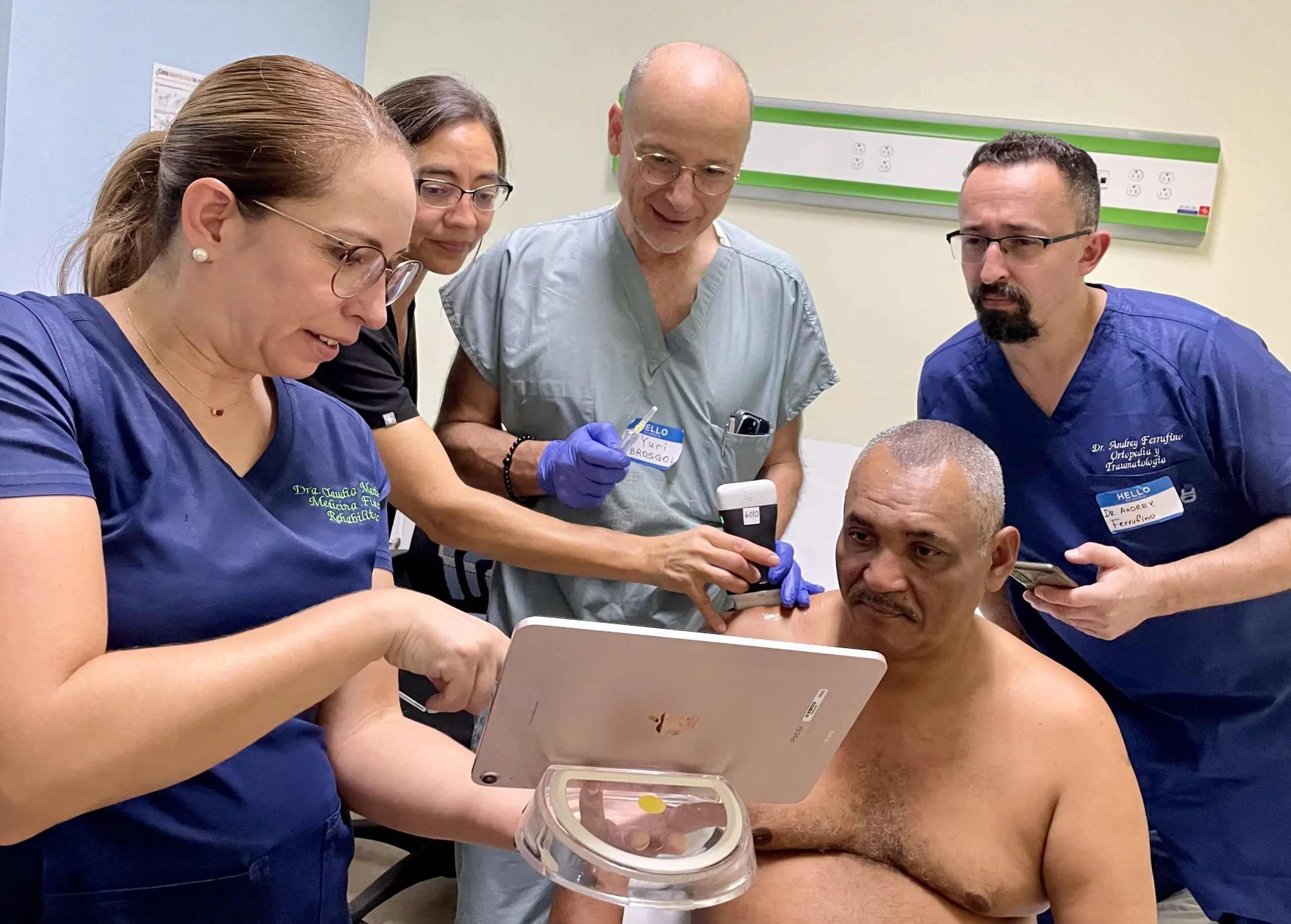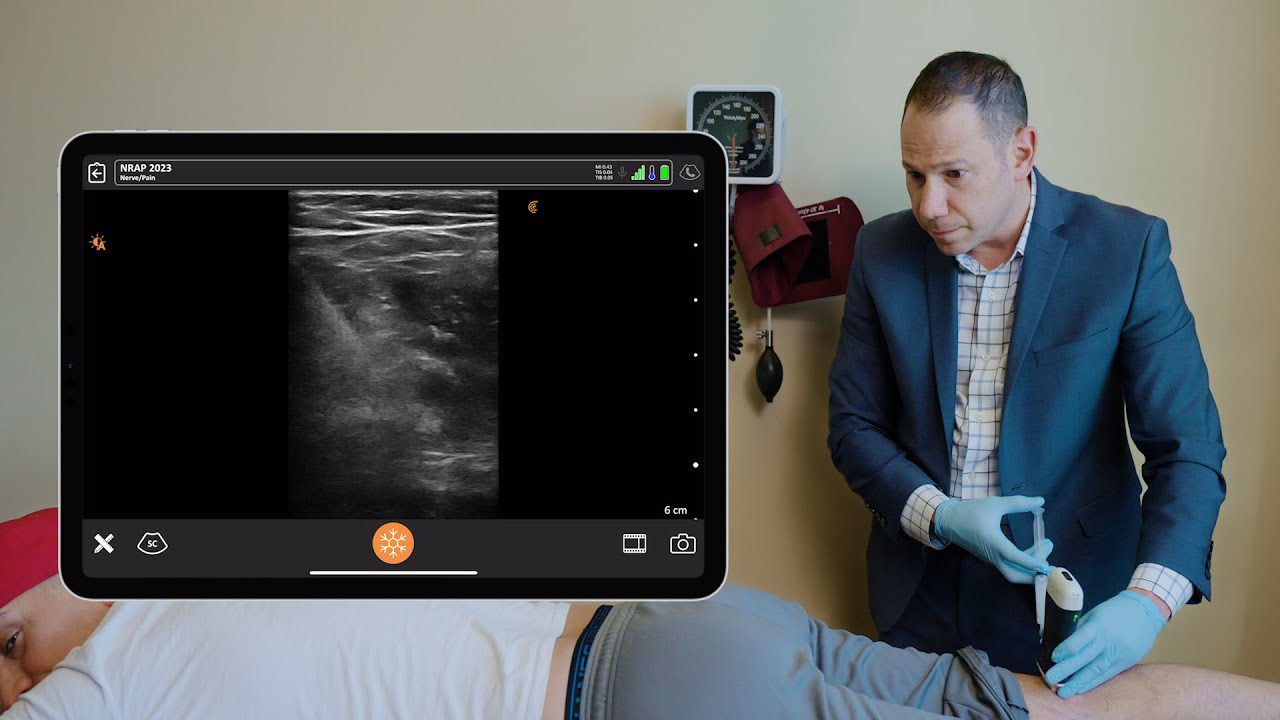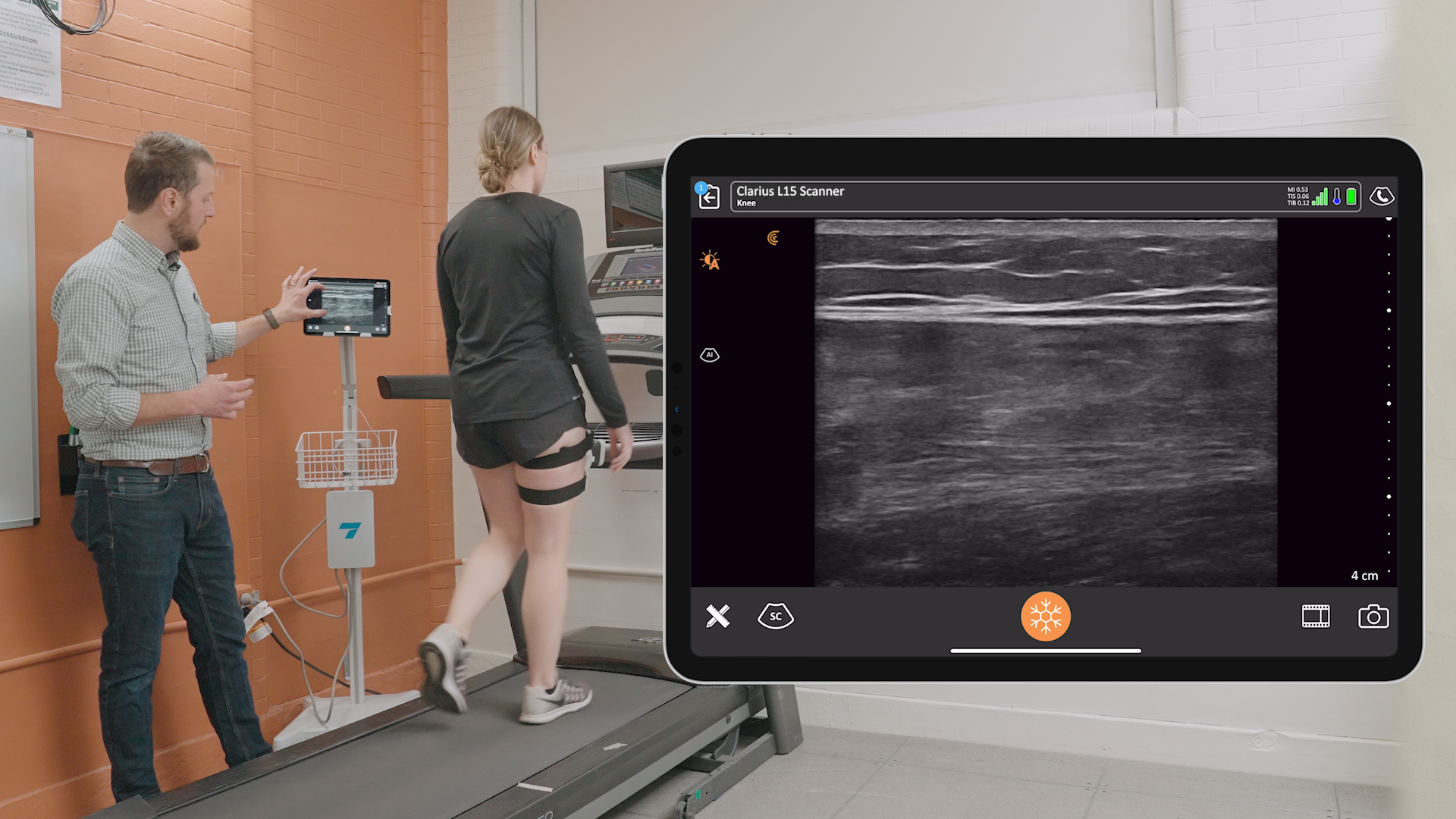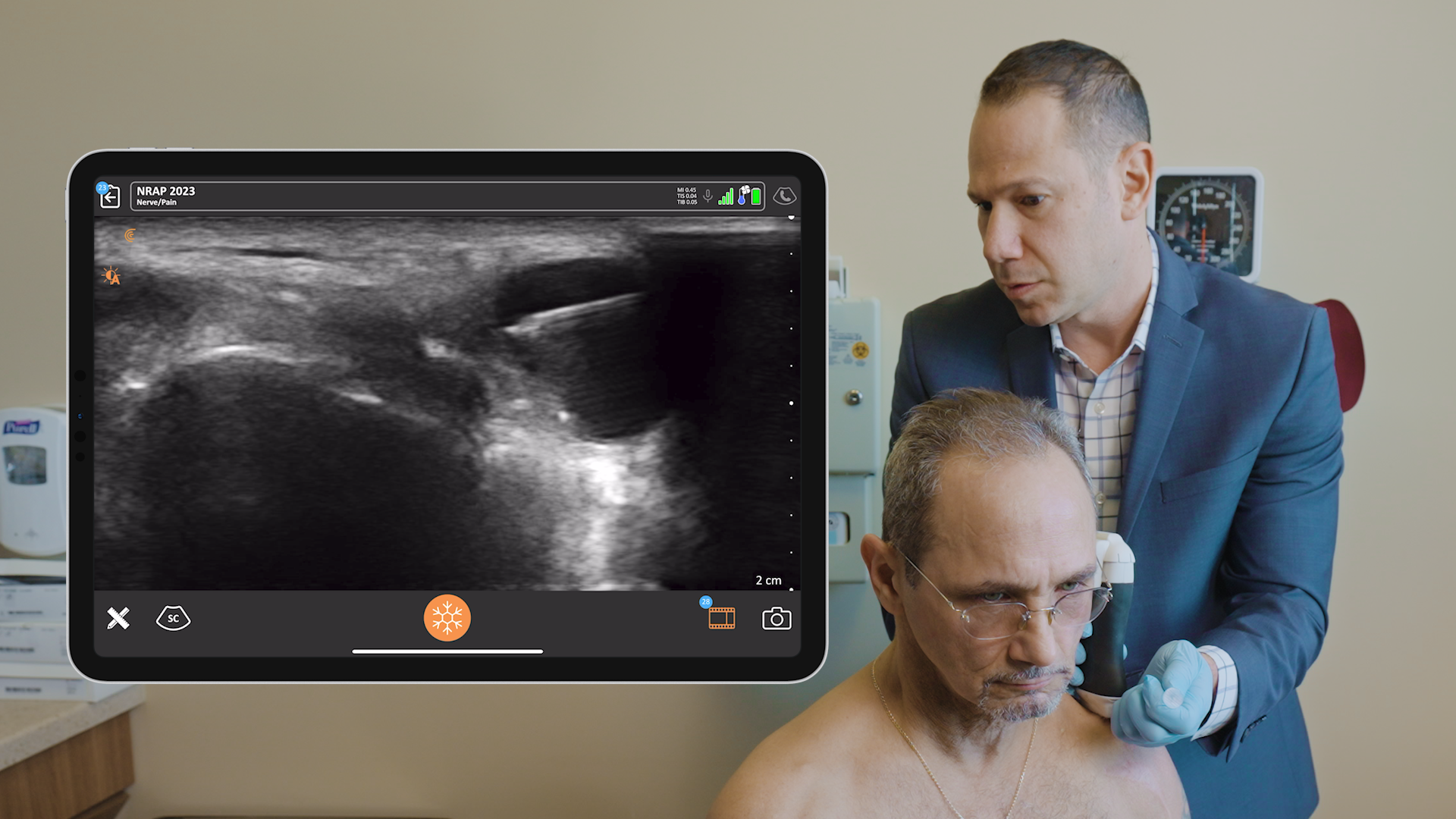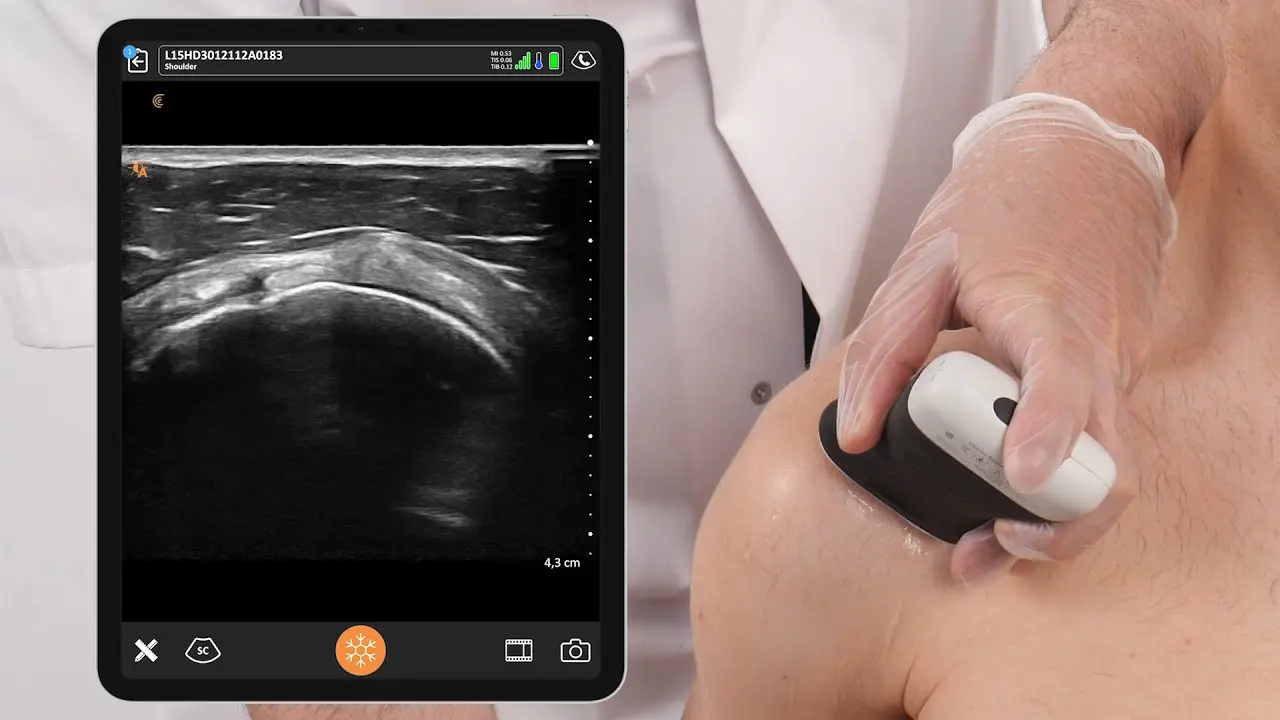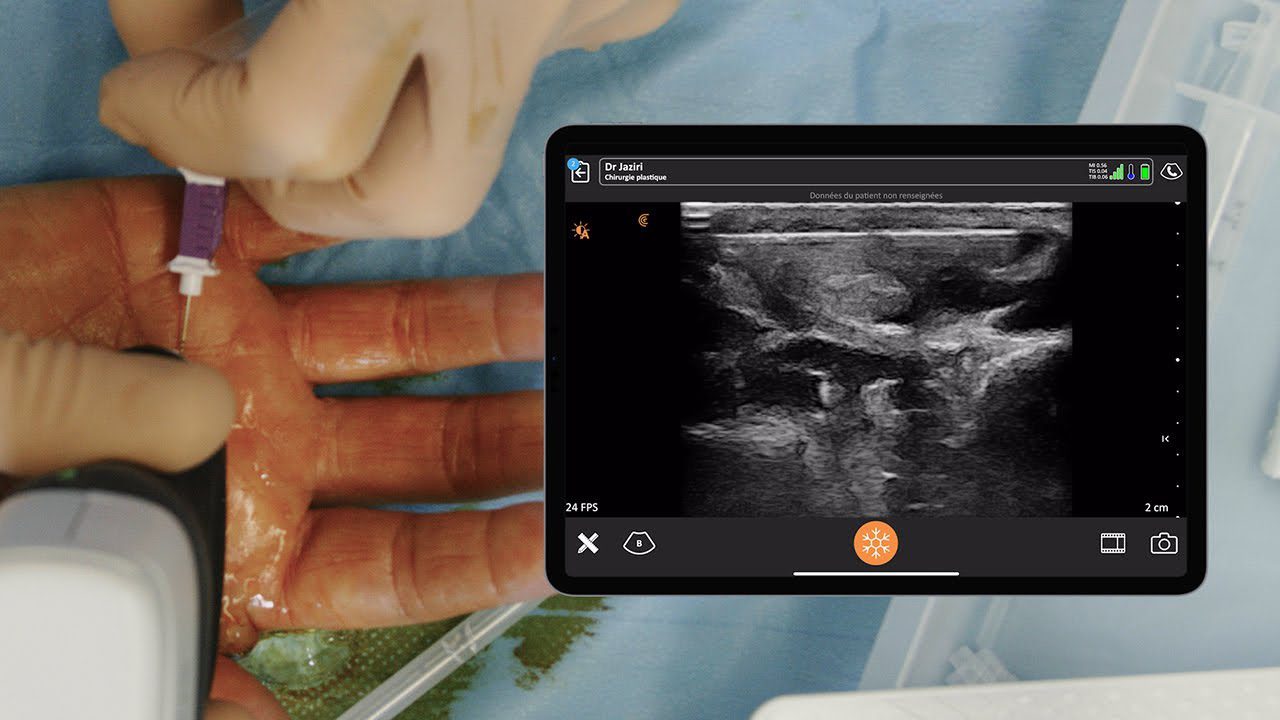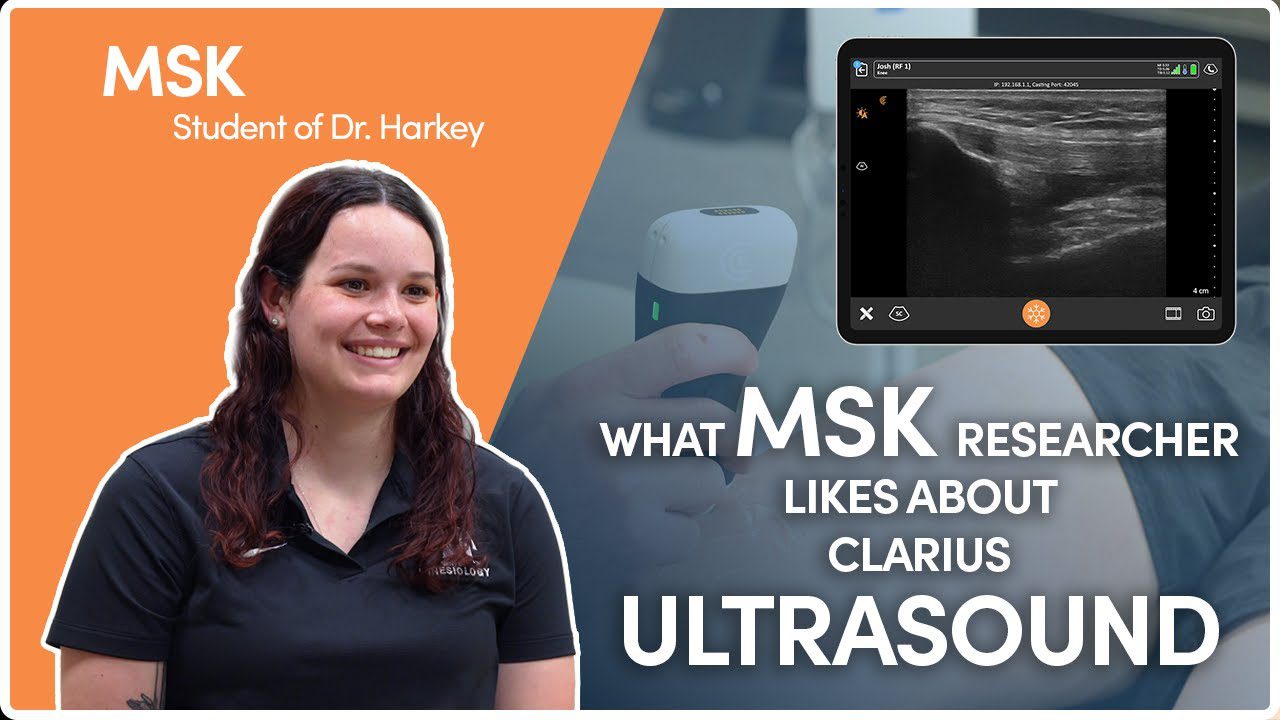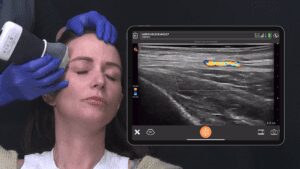
During a recent webinar on ultrasound-guided pain procedures, « Head to Toe Analgesia: Ultrasound-Guided Subacromial, Cluneal Nerve, Knee, and Tarsal Tunnel Injections« , renowned pain management expert Dr. David Rosenblum shared his experience treating a patient with chronic shoulder pain with a suprascapular nerve injection.
If you listen to my podcast and you know me, this is my favorite block to do because it’s so versatile, so safe. And you could do so much good for a variety of pathologies, whether it’s shoulder pain or even patients who have radicular pain, but it’s manifesting in this region by the supraspinatus. »
The suprascapular nerve innervates the infraspinatus and supraspinatus muscles, as well as essential portion of the capsule and ligaments in the shoulder joint, so this type of block is effective for treating chronic shoulder pain secondary to arthritis, bursitis, and rotator cuff disease including adhesive capsulitis.
There is plenty of evidence that supports the suprascapular nerve block is safe and effective for the treatment of shoulder pain. It is often combined with physical therapy to improve results.
Suprascapular nerve block is a safe and effective treatment for patients with hemiplegic shoulder pain.”
Adey-Wakeling Z, Crotty M, Shanahan EM. Suprascapular nervel block for shoulder pain in the first year after stroke: a randomized controlled trial. Stroke.2013 Nov;44(11):3136-41
Effective results after suprascaular nerve blockage was obtained for the treatment of refractory frozen shoulder cases.”
Ozkan K, Ozcekic AN, Sarar S, Cift H, Ozkan FU, Unay K. Suprascapular nerve block for the treatment of frozen shoulder. Saudi J Aneasth. 2012 Jan;6(1): 52-5.
Combination of physical treatment with Suprascapular nerve block is a safe and efficacious treatment for the treatment of shoulder pain in frozen and arthritis.”
Abdelshafi ME, Yosry M, Elmulla AF, Al-Shahawy EA, Adou Aly M, Eliewa EA. Relief of chronic shoulder pain: a comparative study of three approaches. Middle East J Anesthesiol. 2011 Feb;21(1):83-92.
Suprascapular nerve block can be considered the preferred treatment for non-specific shoulder pain because of being as effective as steroid injection with rare side effects.”
Taskaynatan MA, Yilmaz B, Ozgul A, Yazicioglu K, Kalyon TA. Suprascapular nerve block versus steroid injection for non-specific shoulder pain. Tohoku J Exp Med. 2005 Jan; 205(1):19-25.
Suprascapular nerve block is a safe and efficacious treatment for the treatment of shoulder pain in degenerative disease and/or arthritis. It improves pain, disability, and range of movement at the shoulder compared with placebo. It is a useful adjunct treatment for the practicing clinician to assist in the management of a difficult and common clinical problem.”
Shanahan EM, Ahern M, Smith M, Wetherall M, Bresnihan B, FitzGerald O. Suprascapular nerve block (using bupivacaine and methylprednisolone acetate) in chronic shoulder pain. Ann Rheum Dis. 2003 May;62(5):400-6.
Demonstration: Suprascapular Nerve Block
To locate the suprascapular nerve Dr. Rosenblum places his scanner just above the scapula.
This nerve is deeper so the depth on the screen will likely need to be adjusted to 4- 5 cm. The suprascapular nerve is located deep to the supraspinatus muscle and lies between the transverse scapular ligament and the spine of the scapula.
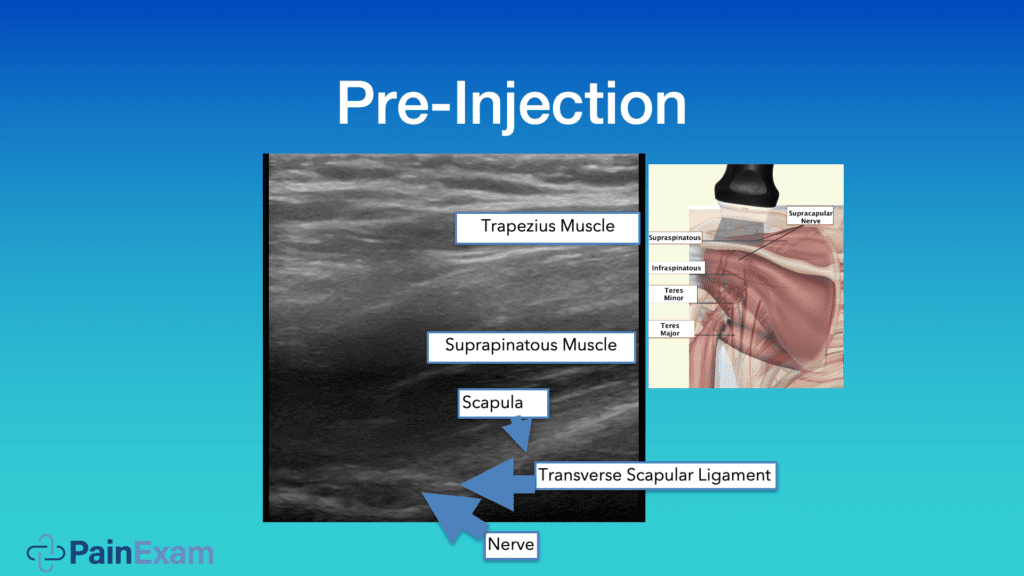
Watch this short Clarius Classroom Video to see how Dr. Rosenblum gives a quick overview of shoulder ultrasound and performs a supraclavicular nerve block.
A typical injection consists of Bupivicaine 0.25% 5 ml, +/- Depomedrol 5-20 mg, and Dr. Rosenblum’s needle of choice is a 25 gauge 3.5 inch spinal needle.
I like using this needle because I find it to be less painful. It’s 25 gauge, it’s not so thick. I’ve used the echogenic or blunt needles, and I find that the blunt needle, I need more force to get in and it hurts a lot more. “
Watch the full webinar, « Head to Toe Analgesia: Ultrasound-Guided Subacromial, Cluneal Nerve, Knee, and Tarsal Tunnel Injections« , to learn more about Dr. Rosenblum’s techniques for successful pain management.
About Dr. Rosenblum
Dr. Rosenblum is the Director of Pain Management at the Maimonides Medical Center in New York. A prolific educator, he hosts the Pain Exam Podcast and created a Pain Exam Board Review, which has helped more than 3,000 pain management physicians become board certified. He uses the Clarius L7 HD3 scanner to guide his procedures.
Interested in more ultrasound training? Visit www.Painexam.com/events for upcoming courses by Dr. Rosenblum.
There is no CME credit for watching this webinar however one may reflect upon the knowledge discussed and obtain CME credit via NRAPpain.org.
Improve Procedural Success with Clarius
With high-definition nerve and musculoskeletal (MSK) imaging, Clarius HD3 is the ideal wireless ultrasound system for safe, accurate procedure guidance.
To learn about how easy and affordable it is to add Clarius wireless ultrasound to your practice, visit our Pain Management Speciality Page. Or contact us today to request a demo with one of our ultrasound experts.


